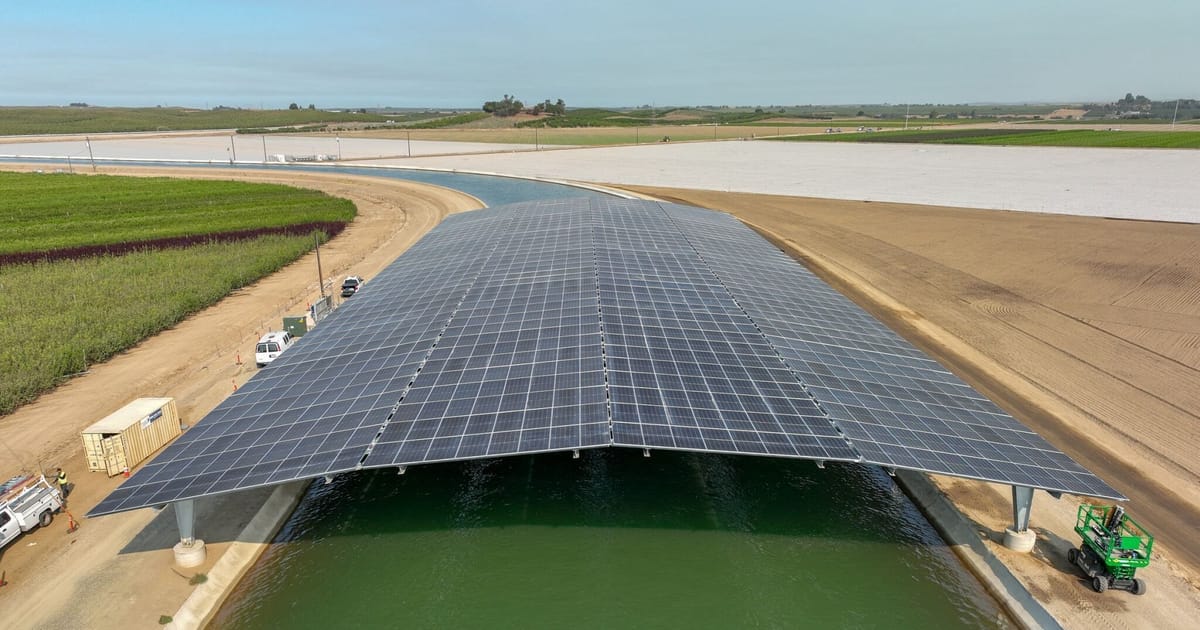Still, the technology isn’t an obvious choice for many canal operators.
Elevating solar panels over canals is more expensive and technically complex than installing conventional ground-mounted solar arrays on trackers, and it can involve using more concrete and steel. Wider canals may also require support structures for panels within the waterway, which can disrupt the flow of water.
Earlier this year, a senior engineer at Arizona’s Salt River Project recommended that the power and water utility not pursue a solar-canal pilot “based on cost estimates and project concerns,” after comparing the unique design to both rooftop and utility-scale solar alternatives.
Solar-canal developers are hoping they can still gain a toehold in irrigation districts that are grappling with high electricity costs and have limited options for generating cheap power, said Ben Lepley, the founder of engineering firm Tectonicus, which designed the Gila River Indian Community’s 1.3-MW system south of Phoenix.
The initial costs are “definitely higher … but it can actually be really fast as a project,” Lepley said. “By the next year, you can have really cheap electricity, and that gives [irrigation districts] stability over the 30-year life of the project.”
For its part, the Gila River Indian Community is building solar-canal projects as part of its broader mission to “generate enough renewable energy to completely offset the electrical use by the irrigation district,” said DeJong. He noted the district pays about $3 million a year for the 27 million kilowatt-hours of electricity it needs to pump, move, and store water.
The community built its first solar-canal project over the Casa Blanca Canal with a nearly $5.7 million grant provided by the Inflation Reduction Act — part of a $25 million provision that supplied funding for the U.S. Bureau of Reclamation to design, study, and deploy projects that put panels over waterways. Irrigation districts in California, Oregon, and Utah received the remaining funds to develop their own installations.
The Trump administration is unlikely to support future programs, given its focus on gutting clean energy incentives, but a handful of projects are already moving forward without such grants.
DeJong said that construction is 90% complete on the tribal community’s second solar-canal project, a nearly 0.9-MW array built in partnership with the U.S. Army Corps of Engineers, which is slated to go online later this year. The community is self-funding a similar-sized project over the Santan Canal and is developing a floating solar array on one of its reservoirs, with both systems set to be up and running by early 2026. All told, the installations will provide 4 MW in local clean energy generation, he said.
“We have become really familiar with the economics of building these [canal] projects,” said Lepley, whose firm also worked on the Gila River Indian Community’s second and third solar-canal systems. “We have a pretty good playbook of how to continue these projects going forward, even without any grant funding from the federal government.”
{
if ($event.target.classList.contains(‘hs-richtext’)) {
if ($event.target.textContent === ‘+ more options’) {
$event.target.remove();
open = true;
}
}
}”
>

